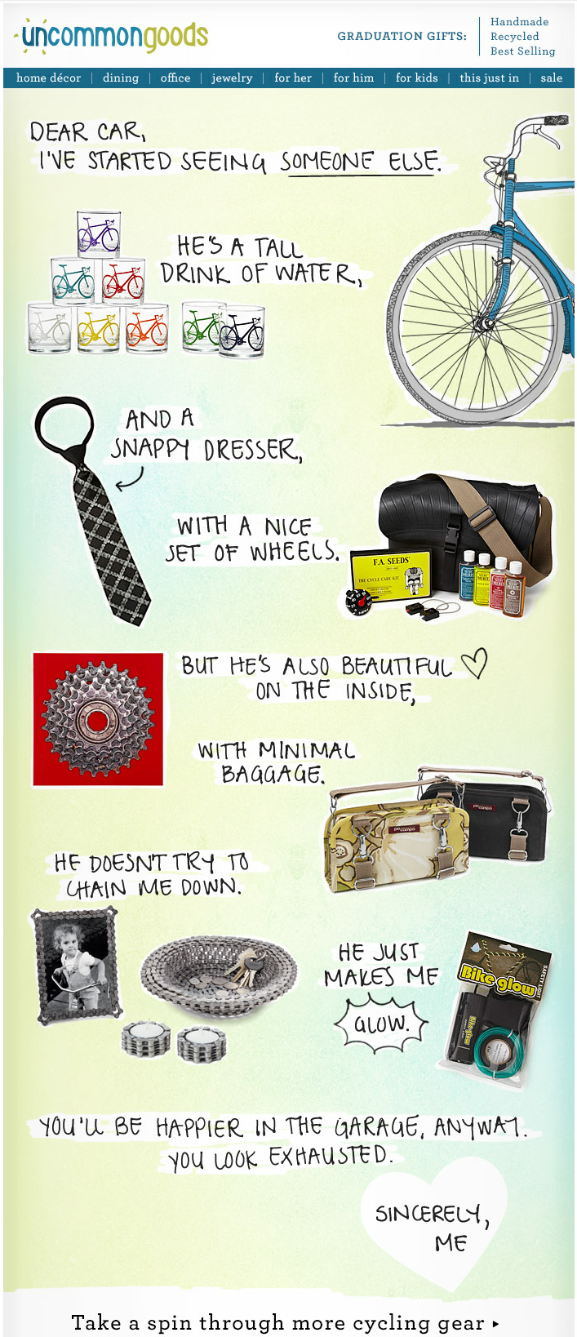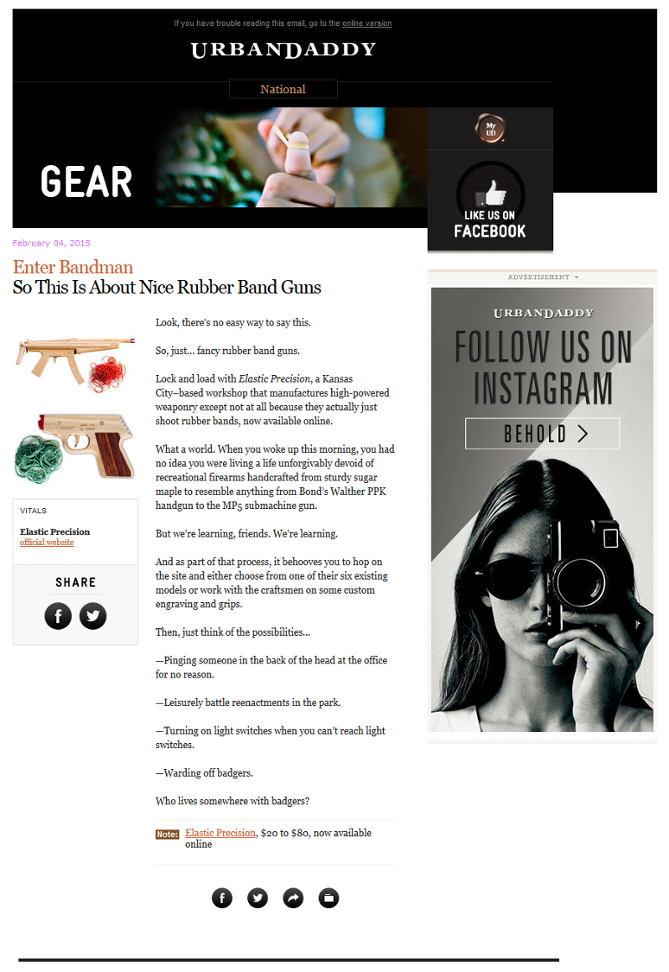How Storytelling can Change your Email Marketing Campaigns for the Better
“Stories have to be told or they die, and when they die, we can’t remember who we are or why we’re here.” Sue Monk Kidd
The importance of storytelling in digital marketing can’t be reiterated enough. It’s what drives the audience to connect with your brand and find your products or services more appealing. Therefore, it only makes sense to infuse storytelling with your email marketing. This is because one has formed the foundation of human interaction for millennia while the other is the most common medium for sharing information in this day and age. But what does storytelling in email marketing look like?
Once Upon a Time
Story telling in email marketing can take many forms, but the most important part of the narration is to sell the product or service without selling it. UncommonGoods, a retailer offering a range of niche merchandise, is a perfect example.  UncommonGoods’ email reads like a breakup letter being sent from a disgruntle car owner to his car. It’s a comedic, short text and image dependant, approach whereby the brand aims to promote it’s cycling products, which the driver has chosen over his former vehicle. As you can see, the products aren’t being promoted directly. However, each item has a benefit sneakily attached to it. As a result of the strategy, the audience is more likely to remember the story, share it with their friends, and subsequently purchase one or more items.
UncommonGoods’ email reads like a breakup letter being sent from a disgruntle car owner to his car. It’s a comedic, short text and image dependant, approach whereby the brand aims to promote it’s cycling products, which the driver has chosen over his former vehicle. As you can see, the products aren’t being promoted directly. However, each item has a benefit sneakily attached to it. As a result of the strategy, the audience is more likely to remember the story, share it with their friends, and subsequently purchase one or more items.
There lived a hero
While visually immersive emails are essential to telling a captivating story, the narrative has to be relevant; it needs to be familiar. This is why having an architype is so essential. Although not an email, UrbanDaddy’s page about rubber band guns can be applied to email campaigns.  Compared to UncommonGoods’ comedic narrative, UrbanDaddy makes use of the quest archetype, starting their story with a captivating heading titled Enter the Bandman. The brand cuts straight to the chase, making the reader the hero of the story. It tells a story of the audience traversing day to day life with barely any fun. But that’s until they get to customise their very own rubber band gun and use it for all sorts of adventures. Such a narrative is simple and familiar to most, but still authentic. It gives the audience an idea of what they could do with the product, relying on their imagination to connect the dots.
Compared to UncommonGoods’ comedic narrative, UrbanDaddy makes use of the quest archetype, starting their story with a captivating heading titled Enter the Bandman. The brand cuts straight to the chase, making the reader the hero of the story. It tells a story of the audience traversing day to day life with barely any fun. But that’s until they get to customise their very own rubber band gun and use it for all sorts of adventures. Such a narrative is simple and familiar to most, but still authentic. It gives the audience an idea of what they could do with the product, relying on their imagination to connect the dots.
And they lived happily ever after
Consistency should play a vital role in the narrative, regardless of the archetype. This leaves very little space for confusion, which can reduce your audience’s attention and interest significantly. Both examples have a theme that they stick to, taking the reader on a journey that is easy to understand and enjoy. Emails can be entertaining through storytelling. If done right, they can capture the audience’s attention and entice them into making the desired decision. All it takes is giving the audience something that sticks to the plot, and is relevant. The end.




